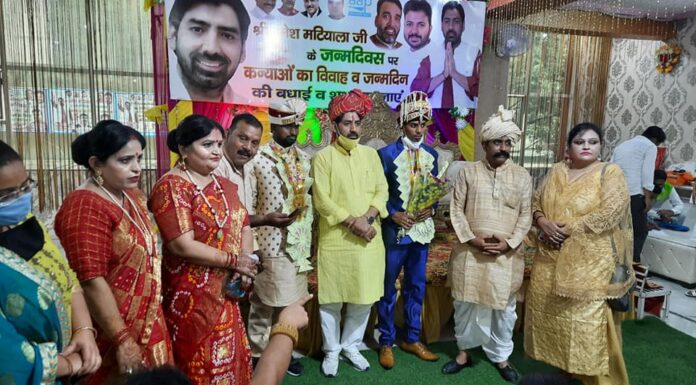India is an ancient agricultural country. Today, over 58% of rural households depend upon agriculture as their principal means of livelihood. Agriculture, along with fisheries and forestry, contribute upto 17.3 percent in the Gross Domestic Product (GDP) of the country. Yet, agriculture in India today cannot be said to be in a good condition. The stark observation made in the Economic Survey of 2015-16 states that “Indian agriculture, is in a way, a victim of its own past success – especially the green revolution”. Farmer suicide, depleting soil conditions and various other environment factors are further badly hampering the agriculture in India. This shows that the time has come for Indian youths to rescue farming and work for its improvement.
Though the improvement of farming and agricultural produce is directly linked to our lives (as 50% of the Indians are vegetarians), below are some of the other significant factors which explain why it has become imperative to save Indian farming.
-
Depleting natural resources:
Indian agriculture saw a golden era when the Indira Gandhi government implemented the green revolution. But even if the produce increased at that time, the excessive use of fertilizers has led to major deterioration of quality of soil in the northern states of Punjab, Haryana, Himachal where the green revolution was concentrated to the highest level. Also, there have been negative environmental effects in the form of depleting water table, emission of greenhouse gases, and the contamination of surface and ground water. With passing years and increasing population, the demand for grains and vegetables is ever increasing which is putting impossible pressure on the available farming lands. In such a situation, needless to say, a major intervention by educated youths and government required.
-
Farmer suicides
In India, still a majority of farmers depend on traditional farming and nature. Many of the remote villages do not have irrigation and due to lack of education and awareness, most of the farmers even do not take any steps to implement irrigation. Proper knowledge regarding the type of soil, the crop varieties and good fertilizers is not available which makes the entire process of farming a big gamble. In such case, needless to say, if the farmer is poor he is doomed for life. Unpredictable nature and natural calamities like excessive rains or droughts makes the situation even more complicated and farmers are left with nothing but suicides. Even the next generation in farmers families are vary of taking up farming because of lack of guidance. Knowledgeable youths have a big role to play in such situations. With their knowledge, they should try to create awareness as much as possible. Finance minister Arun Jaitley has already started various food security and farmer security measures. Young minds should build on it and try to help farmers.
-
Seed quality
Seed is a critical and basic input for attaining higher crop yields and sustained growth in agricultural production. Distribution of assured quality seed is as critical as the production of such seeds. Unfortunately, good quality seeds are out of reach of the majority of farmers, especially small and marginal farmers mainly because of exorbitant prices of better seeds. In order to solve this problem, the Government of India established the National Seeds Corporation (NSC) in 1963 and the State Farmers Corporation of India (SFCI) in 1969. Thirteen State Seed Corporations (SSCs) were also established to augment the supply of improved seeds to the farmers. High Yielding Variety Programme (HYVP) was launched in 1966-67 as a major thrust plan to increase the production of food grains in the country. But Indian farmer seem to not have utilized these facilities. If youth today, with modern technology and available resources make sure that the good quality seeds reach the farmers, it will become a major beneficial factor for the agriculture’s growth and sustenance for a longer duration. Good quality seed also improves the soil quality, so it can become a double advantage.
-
Irrigation
Although India is the second largest irrigated country of the world after China, only one-third of the cropped area is under irrigation. Irrigation is the most important agricultural input in a tropical monsoon country like India where rainfall is uncertain, unreliable and erratic India cannot achieve sustained progress in agriculture unless and until more than half of the cropped area is brought under assured irrigation. This is testified by the success story of agricultural progress in Punjab Haryana and western part of Uttar Pradesh where over half of the cropped area is under irrigation! Large tracts still await irrigation to boost the agricultural output. Young minds, taking education in various agricultural colleges and universities in India and play a major part in irrigating the barren lands of India and help increase the produce.
-
Unfair trade practices and manipulation by middlemen
Indian agriculture is a complex cobweb of peddlers, traders and middlemen which creates a huge gap between the farmers and the customers. There are deep levels of corruption and unfair practices where poor and uneducated farmers are paid peanuts for their hard grown crops. It also takes ages for the produce to reach the consumers. Plus, there are also major cases of holding of grains by middlemen and also by some government officials to create artificial scarcity and increase the price. In such cases, farmers get depressed and are apprehensive to get into a business where they are not assured of getting respectable money for their efforts. Recently, many initiatives and processes have been initiated where farmers do not have to depend on traders to sale their produce. Websites like KisanServe etc help farmers to directly sell their crops and vegetables to consumers. Yet, there has to be a major drive for such facilities to reach the poor farmers in the interiors of the country. For this, India would need enthusiastic and knowledgeable youths.































